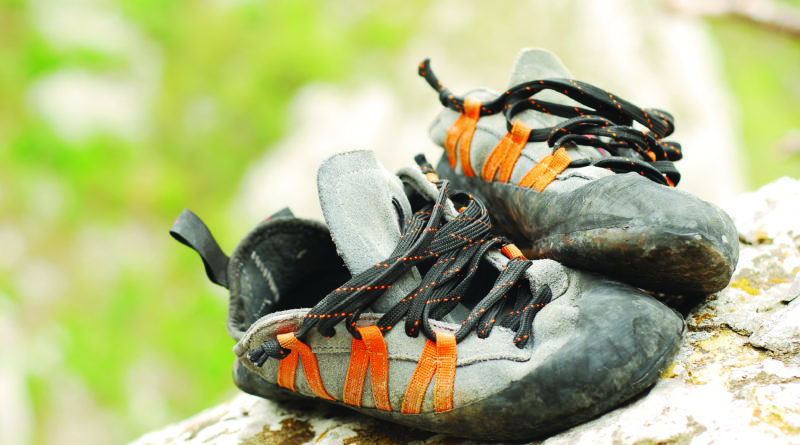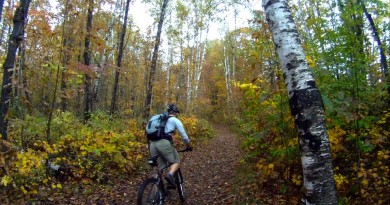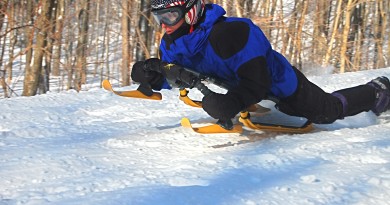Ode to the Old Stinky Approach Shoe
Rearranging my mudroom recently, stashing the winter gear and staging the summer gear, I was forced to confront the sad and troubling fact that my cherished climbing approach shoes are on death’s doorstep: half a heel missing, toes utterly blown, hemorrhaging sticky rubber, leather like a piece of Parmesan smashed against the grater.
I’m hoping to visit Utah this summer—scramble sandstone domes, write vignettes—and the plan is to bring these haggard kicks with me, or what remains of them. They just might accept the abrasion of another reckless romp, just might hold together in spite of weeks of grit and aridity. After that, though… sigh. A funeral pyre is in the cards.
It’s been a long time coming. Five years ago, a buddy in Jackson Hole, Wyoming noticed the floppy, bald, beat-ass sneakers on my feet—we were jogging the Teton Crest Trail, or maybe we were scrambling Teewinot, I forget—and being a generous and concerned fellow, the next morning he donated his pair of La Sportivas to my sorry tootsies.
He had used them a bit, but they were rubbing him raw or something, so he was fine with handing them off. I remember him saying they were incredible—they basically gave a guy Spiderman superpowers—and that they would change my life. I also remember that he was incredulous that for all the time I spent in the mountains, both out West and in homey Vermont, I had never owned a pair of proper approach shoes.
I believe the pair he gave me are the Boulder X, though honestly I’m not certain of the model. What I am certain of is that these friends (I nicknamed them, brilliantly, Left and Right) have traveled with me over hundreds of miles of alpine talus and desert slickrock, muddy road and snowy path, even up and down the ladderlike rungs of a redwood in California and a Doug fir in Colorado.
Additionally, there have been repeated explorations of the south face of Camel’s Hump, the intriguing ledges below Mount Mansfield’s Forehead, and Bristol’s soaring Deer Leap cliff. In my pursuit of wildlife and wilderness, of adventure and solitude, of the tangible world beyond screens, beyond politics, beyond abstraction, no piece of the kit has been more valuable. A bond is formed when you use your nasty, stinky shoes as a bivy pillow, you know? To say nothing of entrusting your life to them (a fat smear, a gulp, a prayer, a commitment).
But now… goodbye?
My love of the Boulder X (or whatever it is I’ve been wearing) really is pure and profound, a rare relationship for a dude who is an avowed Thoreauvian minimalist. Material items are tools to improve life, plain and simple, yet mostly I find that material items complicate and disturb life. These shoes are a glorious exception. They are both a ticket to ride and a seatbelt while riding, both a passport to adventure and an embassy to call upon for support when, inevitably, the adventure gets too deep. You don’t put these shoes into action so much as the inverse: they put you into action. And then they watch over you, making sure you don’t do anything stupid.
Let’s pause here and consider that interesting word: approach. There’s an anticipation embedded in the very name of these shoes, a sense of possibility, a yonder-horizon and around-the-next-bend excitement. But what, exactly, are we approaching? It’s not only the summit, the horizon, the trail’s next bend. These unique shoes offer a unique way of approaching—a unique way of being with—the landscape. I’ve read articles about Charles Cole—founder of the company Five Ten, inventor of Stealth Rubber, brains behind the original approach shoe, a total boss—and apparently his idea was to make moving around unroped safer by increasing sensitivity. What we’re really approaching, therefore, is a kind of intimacy with the landscape, a kind of micro-nubbin awareness, a kind of sacred tactile trust.
Bipedalism and the backcountry! Feet and the ground they meet and the sticky rubber that plays the part of Cupid in that relationship! Yes, Cupid, I like that reference. My approach shoes have helped me fall deeper in love with this infinitely textured planet. And come to think of it, those words I used in the preceding paragraph—sensitivity, intimacy, awareness, trust—all are related to the experience of being in love.
In closing: I know that burning sticky rubber is not the best thing to do in this climate-deranged era of ours (I can taste the acrid black smoke already, eww), but hey, mortuary rituals are important—one’s got to pay respects.
If a blazing Viking funeral is excessive, I suppose I could go with the ancient practice of interring the deceased with grave goods: a snatch of tangled white fleece from a mountain goat, a grouse feather, a crumble of Clif Bar, a torn corner of a topographic map, a splotch of sunscreen.
Picture me at dusk, alone in the Breadloaf Wilderness, arranging my La Sportivas in the space between two leaning, lichened rocks, pouring out a shout (for my homies!) from a 40-oz Mickeys, then walking away barefoot, having learned from these shoes that, fundamentally, it’s a honed contact with the ground that I—perhaps that we—desire.
No offense to greasy Green Mountain schist, but Sticky Rubber Heaven must be the High Sierra’s immaculate white granite, eh? Bon voyage, dear friends, dear Left and Right. As the late, great Warren Zevon sang, “Keep me in your heart for a while.”
Leath Tonino is a native of the Champlain Basin and the author of two essay collections about the outdoors, most recently The West Will Swallow You (Trinity University Press). A version of this appeared on adventure-journal.com




